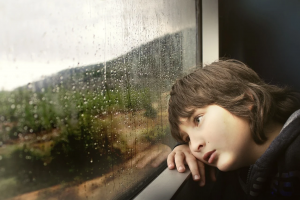The following article was kindly written and contributed by Jori Hamilton.
We all want our children to have the most idyllic childhood possible. Whether you’re a parent, an educator, or both, chances are you would do just about anything to protect the kids in your life from any kind of pain, whether physical or emotional.
Unfortunately, though, it’s just not possible to protect every child from every hurt all the time, every time. In fact, studies show that today’s children and adolescents are suffering from anxiety and depression at increasing rates, with an alarming 1 in 5 children exhibiting some form of mental health disorder each year.
Even more troubling, an estimated 80% of children who need help will not receive it. However, in some ways, that’s where the school systems come in. As educators, we spend nearly as much time with children as their families do, if not even more. That means we are on the frontlines, better able than perhaps anyone outside of the immediate family to recognize the signs of trouble and step in to help.
Sentinel Schools
One of the most important steps in ensuring children in crisis receive the help they need is learning to recognize the signs of a mental health issue. Schools are often the place where the first signs of a problem will manifest, but educators and administrators must be able to recognize the red flags.

The student might begin to have difficulty concentrating and, as a result, their grades may slip. They may become irritable or easily agitated or, conversely, they may seem very lethargic and withdrawn. Signs of mental distress can even manifest in physical symptoms, especially for young children. This could include everything from headaches and stomach upset to aching joints and muscles.
Essentially, any change in the child’s behavior, academic performance, or physical wellness may be a sign of an emerging mental health issue and warrants prompt attention.
Taking Action
It’s not enough to just recognize the signs of a problem. As educators who love their students, it’s also imperative to do something about it. Fortunately, there are many interventions that schools can take to support the psychological and emotional health of their students.
For example, therapy dogs are proving to be highly beneficial for children in school environments. When children are feeling anxious about an upcoming test, for instance, or if they have experienced bullying or any other distressing event, the presence of a therapy dog (or cat, or rabbit, or ferret, or what have you) can be incredibly soothing for the child.
Studies have even shown that students with reading challenges or language delays develop greater proficiency, and at an accelerated rate, when they are given the chance to “read to” a therapy animal. This can improve the child’s self-esteem and make them less vulnerable to anxiety and depression.
As unlikely as the connection may seem, research increasingly shows a significant connection between nutrition and emotional health. To be sure, diets rich in vitamins, minerals, antioxidants, and probiotics support physical health, increasing stamina and feelings of physical wellness. But the positive effects go even further, supporting brain function to improve both cognitive performance and overall mood.
Sadly, millions of children suffer from food insecurity at home, meaning that their only opportunity to access nutritious food may well be at school. Because of this, it is incumbent upon school systems that want their students to thrive not only academically but physically and emotionally as well to ensure all students have daily access to affordable and healthy breakfasts, snacks, and lunches.
The Takeaway
Good mental and emotional health is a child’s right. And it is up to the people charged with the care of America’s children, educators as well as parents, to protect and defend that right. In schools, it means that teachers and administrators must learn to recognize the signs of emotional and psychological distress in children. It also means cultivating a school environment that nourishes and safeguards children’s mental health, from providing therapy animals to help children contend with stress and anxiety to ensuring that all students have abundant access to healthy foods.
 Bio: Jori Hamilton is an experienced writer residing in the Northwestern U.S.
Bio: Jori Hamilton is an experienced writer residing in the Northwestern U.S.
She covers a wide range of topics but takes a particular interest in covering topics related to health and wellness, including mental health awareness and addiction education.
You can follow Jori and learn more about her on Twitter and LinkedIn.